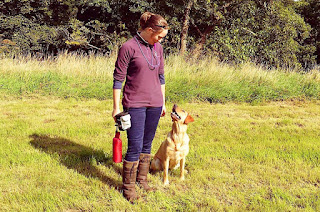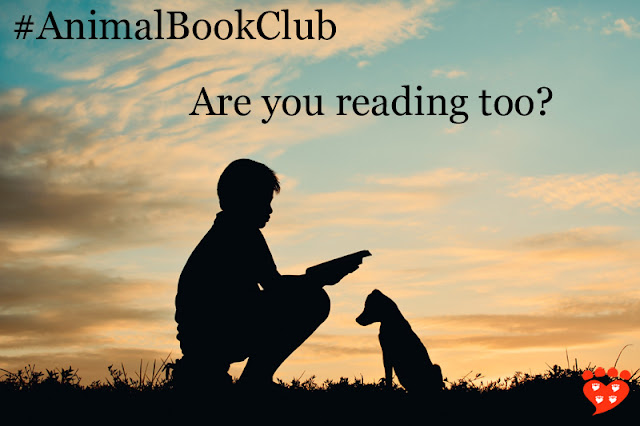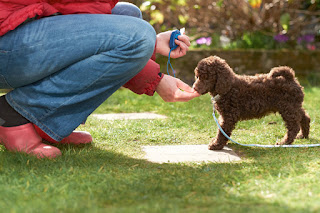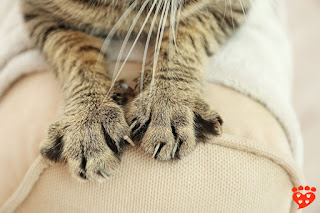Guest post by Sienna Taylor, MSc (Hartpury University Centre).
 |
| Photo: Dorottya Mathe (Shutterstock) |
A new study by Anna Scandurra (University of Naples) et al. investigates whether visual cues as opposed to verbal cues are more effective when dogs are trained to fetch an item under four conditions: using only hand cues, using only verbal cues, using both hand and verbal cues and using contradictory hand and verbal cues.
It turns out that dogs responded better to visual hand gestures than verbal cues although speed of response was quicker when both hand and verbal cues were used together.
Many pet owners teach their dogs to respond to both visual and verbal cues, for example, an owner might ask their dog to lie on the floor by simply using the verbal command “Lie Down” or alternatively using a hand gesture such as pointing or perhaps a combination of both! Whilst dogs do use vocalisations to communicate (such as attracting attention, with vocalisations usually being context specific) (Serpell, 2017), they communicate largely through the use of discrete body postures (Landsberg et al. 2013), both intra-specifically (dog-dog) and inter-specifically (human-dog).
Dogs are adept at responding to our gaze or if we nod (Kaminski and Nitzschner, 2013) or point towards a particular object (Lakatos et al. 2012). Sometimes we find that when we ask a dog to verbally “Lie Down” the response is a blank look or an altogether different response! Yet if we use a hand gesture such as point to the floor or use a combination of both verbal and visual cues the dog instantly lies down. This more immediate response to a visual cue, even when in combination with a verbal cue, has often puzzled owners and begs the question are visual cues more effective in dog training than verbal cues or should we be using both?
The study by Scandurra et al. (2018) set out to test whether 13 pet dogs responded better to their owners using either visual or verbal cues alone (unimodal) or both visual and verbal cues (bimodal) which took into account both the dogs acute visual and auditory capabilities.
Dogs were trained to ensure they responded equally well to both verbal cues and visual hand gestures and were asked to perform a pre-test fetch task. Objects included a piece of wood, a plastic bottle and a pencil case.
Twenty four trials took place in the pre-test phase, eight trials used verbal cues only (spoken in Italian, with the voice command directing the dog to retrieve one of two items), followed by eight trials using hand gestures only (where the owner directed the dog by pointing to one of two items). A further eight trials used both verbal and visual cues (the owner directed the dog to one of the two items through the use of both verbal and visual cues at the same time).
Nine dogs met the requirements of the pre-test phase and were selected to take part in the final eight trials where a combination of both cues were used. However, this time the cues contradicted one another, for example when asking the dog to retrieve, the owner pointed at one object but named another.
Dogs were found to respond equally well to both verbal and visual cues when used on their own although, when both verbal and visual cues were given together, dogs were found to respond significantly more quickly to the task. When dogs were given contradictory information, 78% of dogs (7 out of 9 dogs) chose the hand gesture. The remaining two dogs performed at a chance level and randomly chose to retrieve the verbally indicated or the object visually pointed at equally often. What’s interesting is that none of the dogs preferred the verbal cue over the hand gesture. This leads us to further question the importance of verbal cues to dogs.
How we use verbal communication (e.g. quality of spoken word) and also level of eye contact has been found to impact level of responsiveness in the dog. Fukuzawa et al. (2005) found that when a dog was asked to sit with the command played through a tape recorder, there was a significant decline in performance. It also took the dog longer to learn the command in the absence of lip or facial movements. Similarly, when the person obscured their eyes by wearing sunglasses and the command was played through the tape, the dog’s responsiveness to the command also reduced. However, when sunglasses were worn and a spoken verbal command was given no reduction in responsiveness was evident. The authors concluded that eye contact is important to dogs but not in all contexts. Fukuzawa et al. (2005) also found that effectiveness of command was reduced when a person’s back was turned. This implies that body postures appear to be important to the dog in understanding signals as part of human-dog communication but may be context dependent.
Next time you use a cue, if the dog does not respond it is worth following up with a hand gesture to see if you get a better response!
About Sienna Taylor:
Sienna Taylor FdSc, BSc (Hons), MSc, FHEA, is a Lecturer in Animal Behaviour and Welfare at Hartpury University Centre, Gloucestershire. Her research interests include human-animal interactions and the use of olfactory enrichment in companion animals. Sienna enjoys training her two year old Labrador Bailey and they are currently working towards their Grade 3 Gundog Test.
You can follow Sienna Taylor on Twitter: @Taylor5Sienna.
References
Fukuzawa, M., Mills, D.S. and Cooper, J.J. (2005) More than just a word: non-semantic command variables affect obedience in the domestic dog (Canis familiaris). Applied Animal Behaviour Science. 91(1), pp.129-141.
Kaminski, J. and Nitzschner, M. (2013) Do dogs get the point? A review of dog-human communication ability. Learning and Motivation. 44, pp. 294-302. https://doi.org/10.1016/j.lmot.2013.05.001
Lakatos, G., Gácsi, M., Topál, J. and Miklósi, Á. (2012) Comprehension and utilization of pointing gestures and gazing in dog-human communication in relatively complex situations. Animal Cognition. 15, pp. 201-213.
Landsberg, G.M., Hunthausen, W.L. and Ackerman, L.J. (2012) Behavior Problems of the Dog and Cat, 3e
Scandurra, A., Alterisio, A., Aria, M., Vernese, R. and D’Aniello, B. (2018) Should I fetch one or the other? A study on dogs on the object choice in the bimodal contrasting paradigm. Animal Cognition. pp. 1-8.
Serpell, J. (2016) The Domestic Dog: Its Evolution, Behavior and Interactions with People
Companion Animal Psychology is a participant in the Amazon Services LLC Associates Program, an affiliate advertising program designed to provide a means for sites to earn advertising fees by advertising and linking to Amazon.com and affiliated sites. Companion Animal Psychology is also a participant in the Etsy Affiliate Program, an affiliate advertising program designed to provide a means for sites to earn advertising fees by advertising and linking to Etsy.com.


































